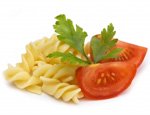|
Triglycerides: Manage the fats in your body
Triglycerides – the main form of fat stored by the body, that provides energy for the body. It consists of three (“tri-”) molecules of fatty acid combined with a molecule of the alcohol glycerol. They come from the food we take in and is also produced by the body. They are found throughout the body and the bloodstream, and are made by the liver and intestines. They are necessary for good health, but a too high level is dangerous. Recent fat and alcohol intake influence triglyceride levels. Therefore, when testing, a period of abstinence of at least 12 hours is advised. Risks: Elevated levels of triglycerides are known to be a risk factor for hardening of the arteries (atherosclerosis). This is because many of the triglyceride-containing lipoproteins that transport fat in the bloodstream also transport cholesterol, a known contributor to atherosclerosis.
High levels can cause pancreatitis (inflammation of the pancreas). A low-fat diet and medication, if needed, is advisable to treat this condition.
There are no physical symptoms, but, as already said, a high level in the bloodstream accelerates the process of atherosclerosis, which can cause symptoms of heart disease, stroke or peripheral vascular disease.
The treatment for high levels includes weight reduction, exercise, a low cholesterol diet, a low fat diet, a high fibre diet, a diet high in omega-3-fatty acids, vitamin supplements and medications that lower serum triglyceride levels.
How about an eating plan to help with high levels of triglycerides?
1. The most important aspect is the omission of sugar and alcohol from the diet. And why? They stimulate triglyceride production. Both sugar and alcohol (which is nothing but fermented sugar!) are sources of excess calories which are being turned into fat, and he fat levels in your blood go up.
When alcohol (ethanol) is present in the blood, the liver prioritizes removing alcohol from the blood, and other metabolic processes are sidelined. The liver can detoxify about one ounce of alcohol per hour (equivalent to 12 ounces of beer or 4 ounces of wine). In the meantime, however, glucose tends to be further processed into triglycerides which raises the level of triglycerides in the blood.
2. Foods to give a definite MISS: ELIMINATE or LIMIT all sugars such as concentrated sweets, sugar, honey, molasses, jams, jellies, candies, pies, cakes, cookies, candy, doughnuts, ice cream, frozen yogurt, sweetened gelatin, sweetened cereals, flavoured yogurts and sports or energy bars.
ELIMINATE or LIMIT alcohol such as beer, wine, hard liquor and liqueurs.
CUT DOWN on red meat, especially fried, changing it to broiled or roasted poultry (turkey, chicken), preferably free-range.
3. A triglyceride lowering diet:
* To drink: Most importantly - mainly purified water. Otherwise fresh fruit juice (not more than 4 oz. per day), black coffee, plain or herbal teas, soft drinks with sugar substitutes, salt free club soda, cocoa made with skim milk (sugar substitute added if desired).
* Meat & fish: Among meats, fish is preferable, especially "safe," or less contaminated fish such as summer flounder, wild pacific salmon, croaker, sardines, haddock and tilapia. Also permitted: canned shrimp, oysters, but very sparingly, as they are high in cholesterol. If opting for meat: Lean meats (chicken, turkey, veal and non-fatty cuts of beef with excess fat trimmed). Meats and fish should be broiled (pan or oven) or baked on a rack.
* Vegetables: Most vegetables are not limited. One dark-green or one deep yellow vegetable is recommended daily. Cauliflower, broccoli and celery, as well as potato skins are recommended for their fibre content. Fibre is essential for the reduction of cholesterol. It is preferable to steam vegetables, but they may be boiled or braised with unsaturated vegetable oil.
* Fruits: Eat three servings of fresh fruit every day (1 serving = ½ cup). Frozen or canned fruit with no sugar or syrup may be taken.
* Starches: One roll or one slice of whole grain or enriched bread may be taken, or three soda crackers or four pieces of melba toast as a substitute. Spaghetti, rice, or noodles (½ cup ) or ½ large ear of corn may be taken as a bread substitute.
* Fats, Oils: Use vegetable oils that are high in unsaturated fats (sunflower, soybean, corn and cottonseed). Refrigerate meat drippings to harden the fat and then remove it before preparing gravies.
* Desserts, snacks: Limit to two servings per day, and alternate between these and starches. Ice milk, water sherbet (¼ cup), unflavoured gelatin or gelatin flavoured with sugar substitute (½ cup), pudding prepared with skim milk (½ cup), egg white soufflé or unbuttered popcorn (1.5 cups).
* Other foods:
Limit egg yolks to two per week. However, use egg substitutes and egg white freely.
Use dried peas or beans (1 serving = ½ cup) as a bread substitute.
Eat nuts such as almonds, walnuts, and peanuts sparingly (1 serving = 1 tablespoon).
Use only ½ cup of hot cereal or three quarter cup of cold cereal per day. Always use 99% fat-free or skim milk and dairy products such as low fat cheese or low fat yogurt. Use the following freely: vinegar, spices, herbs, non-fat bouillon, mustard, worcestershire sauce, soy sauce and flavouring essences.
And remember: MODERATION IS THE KEY TO A SUCCESSFUL PROGRAMME!
Return from Triglycerides to Organic foods
|





